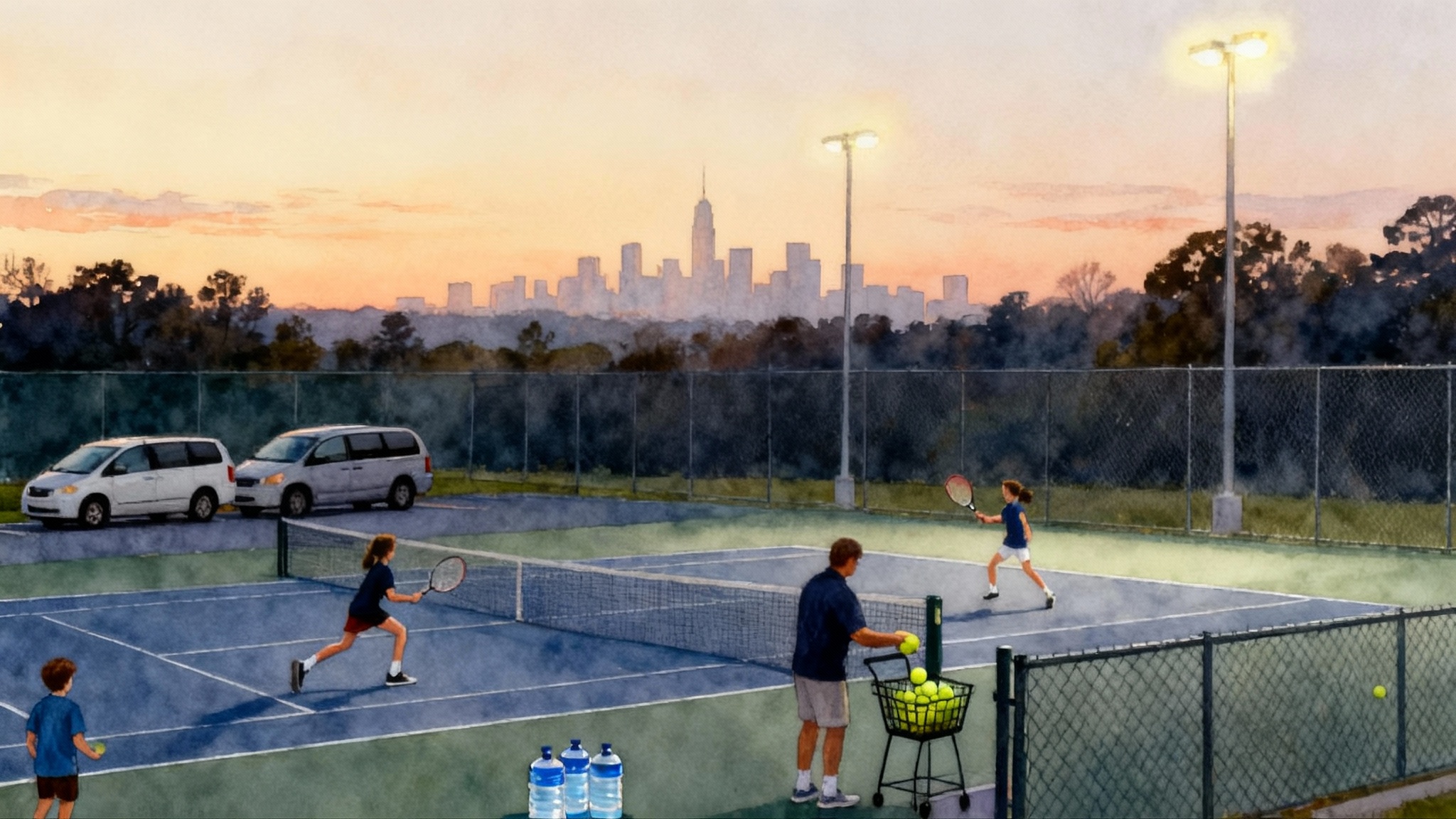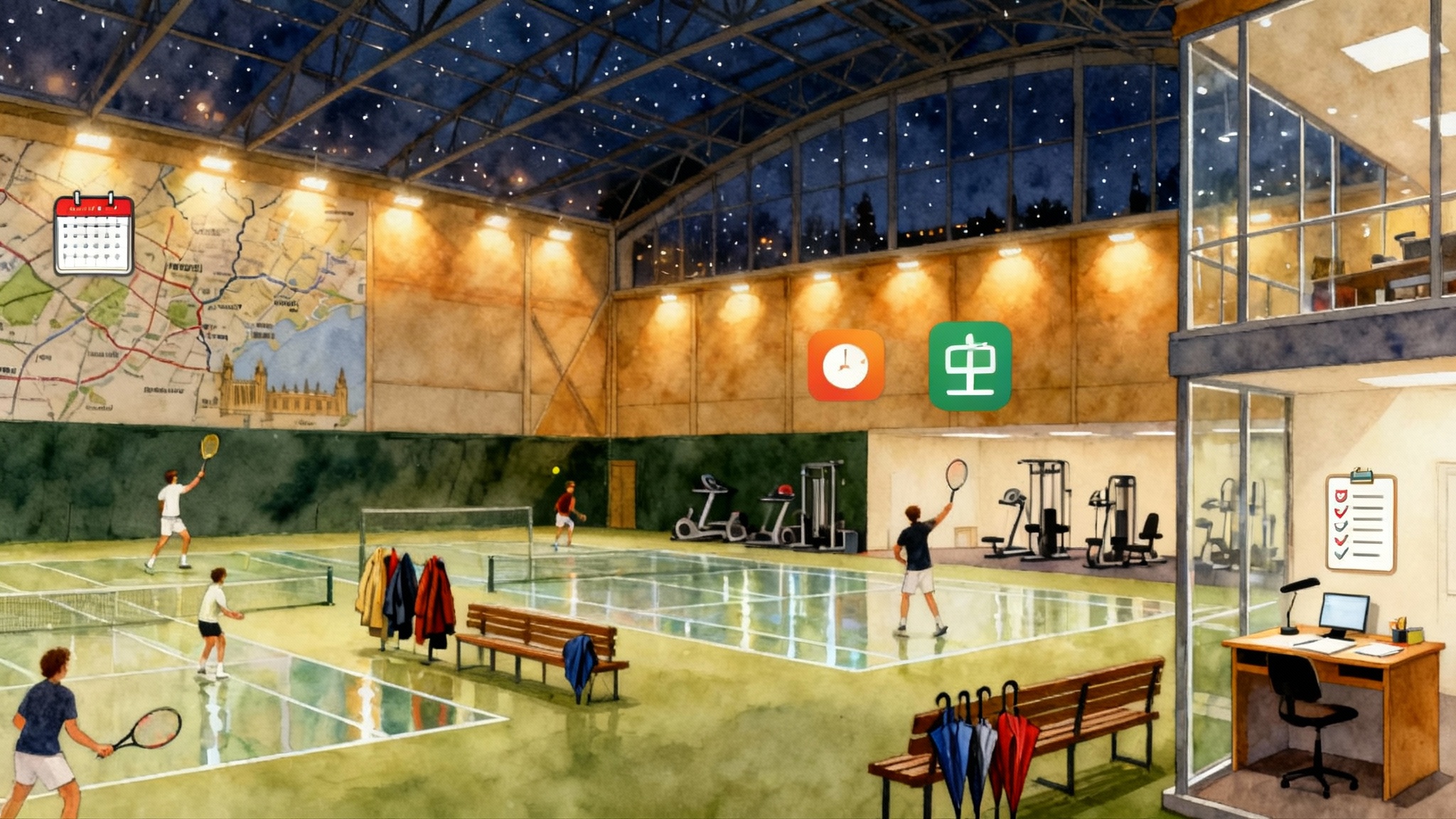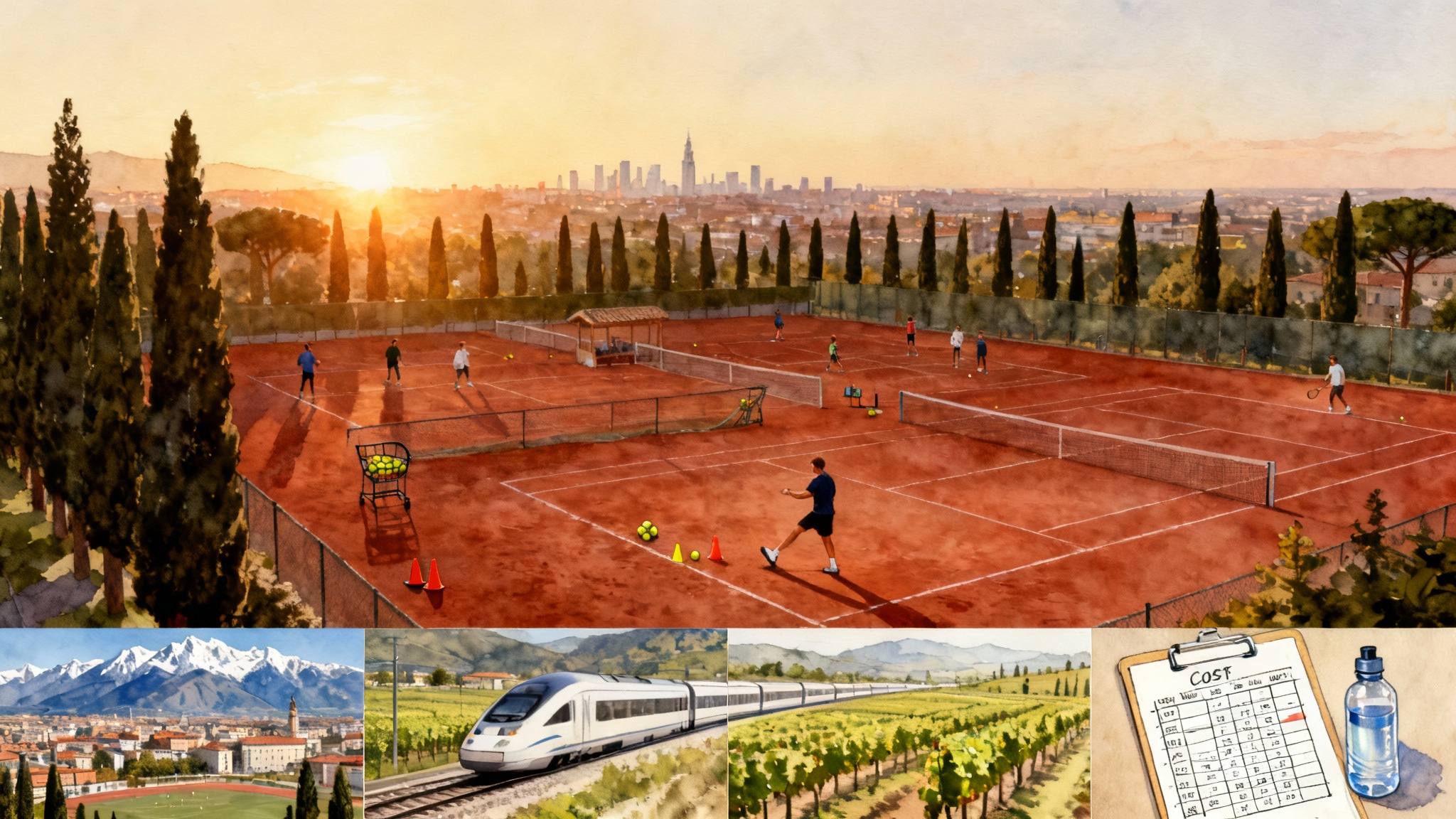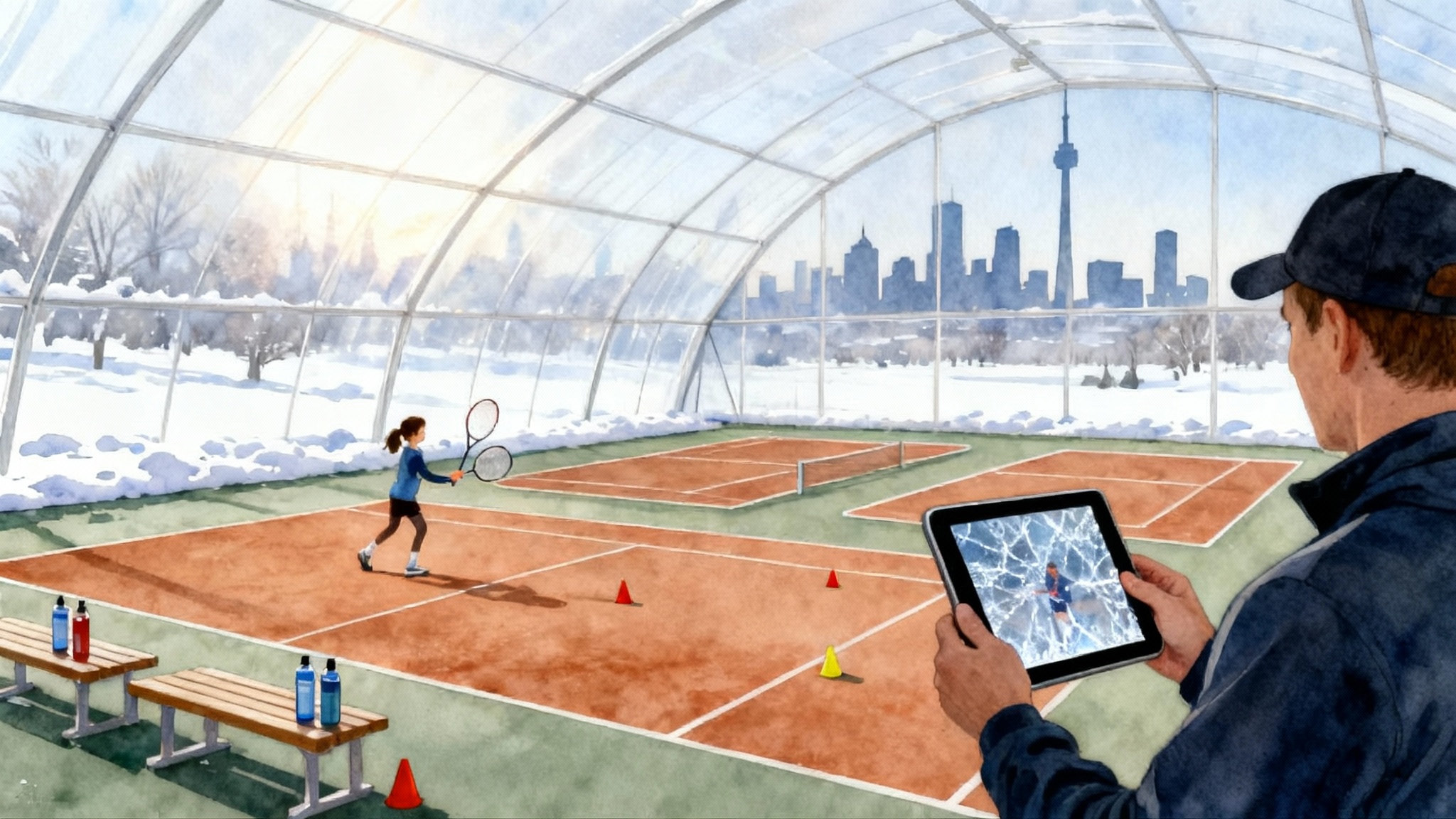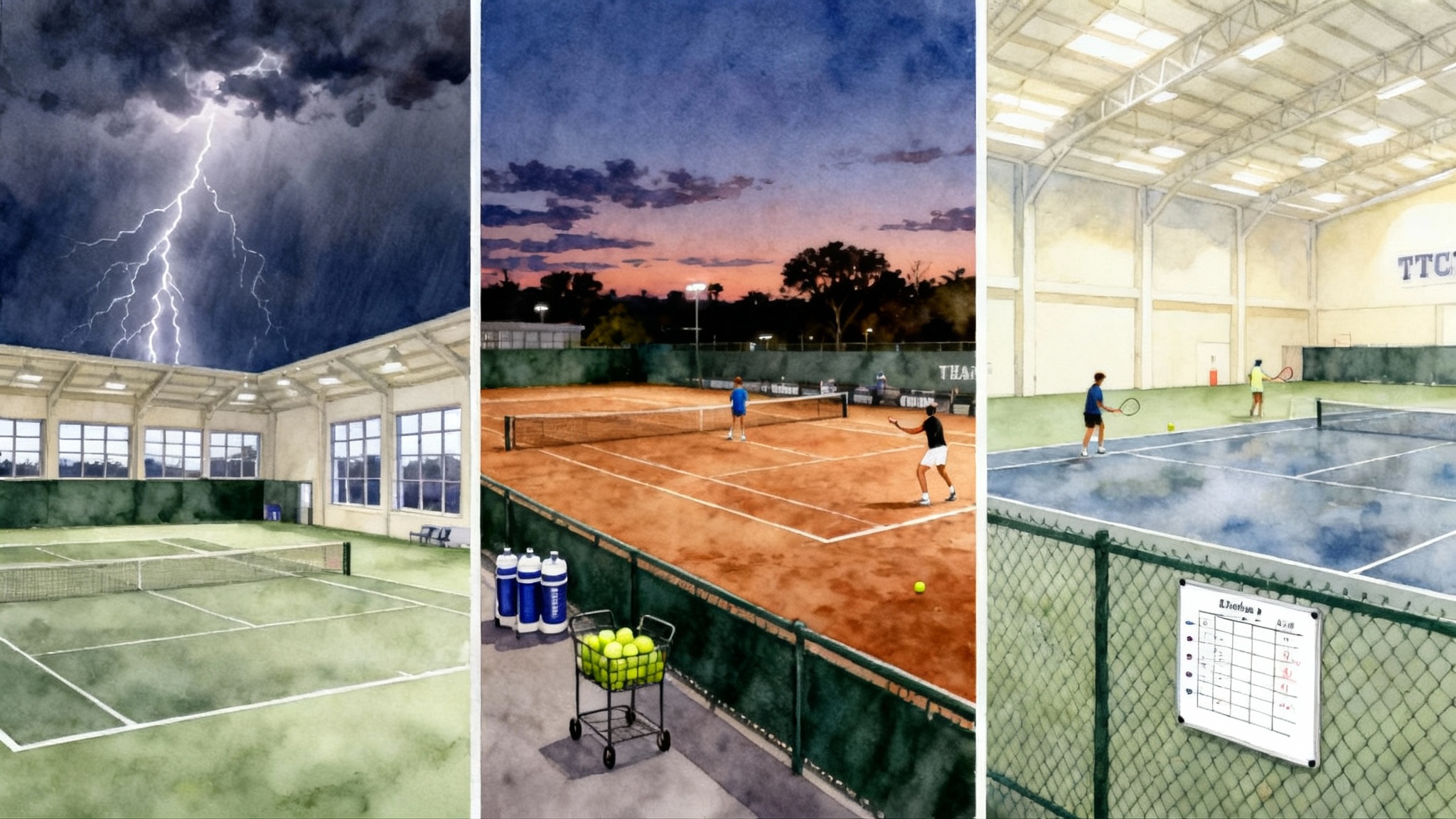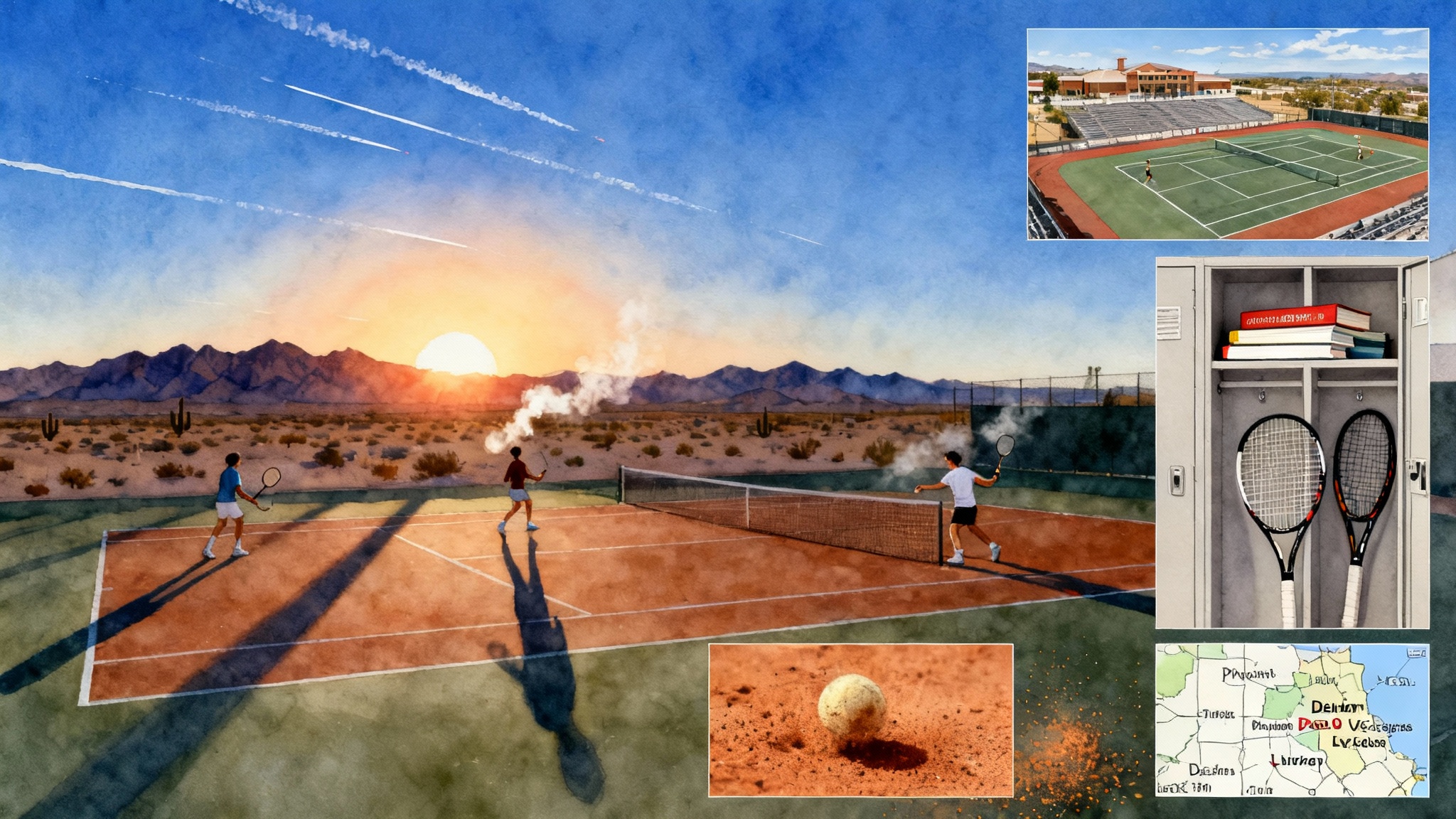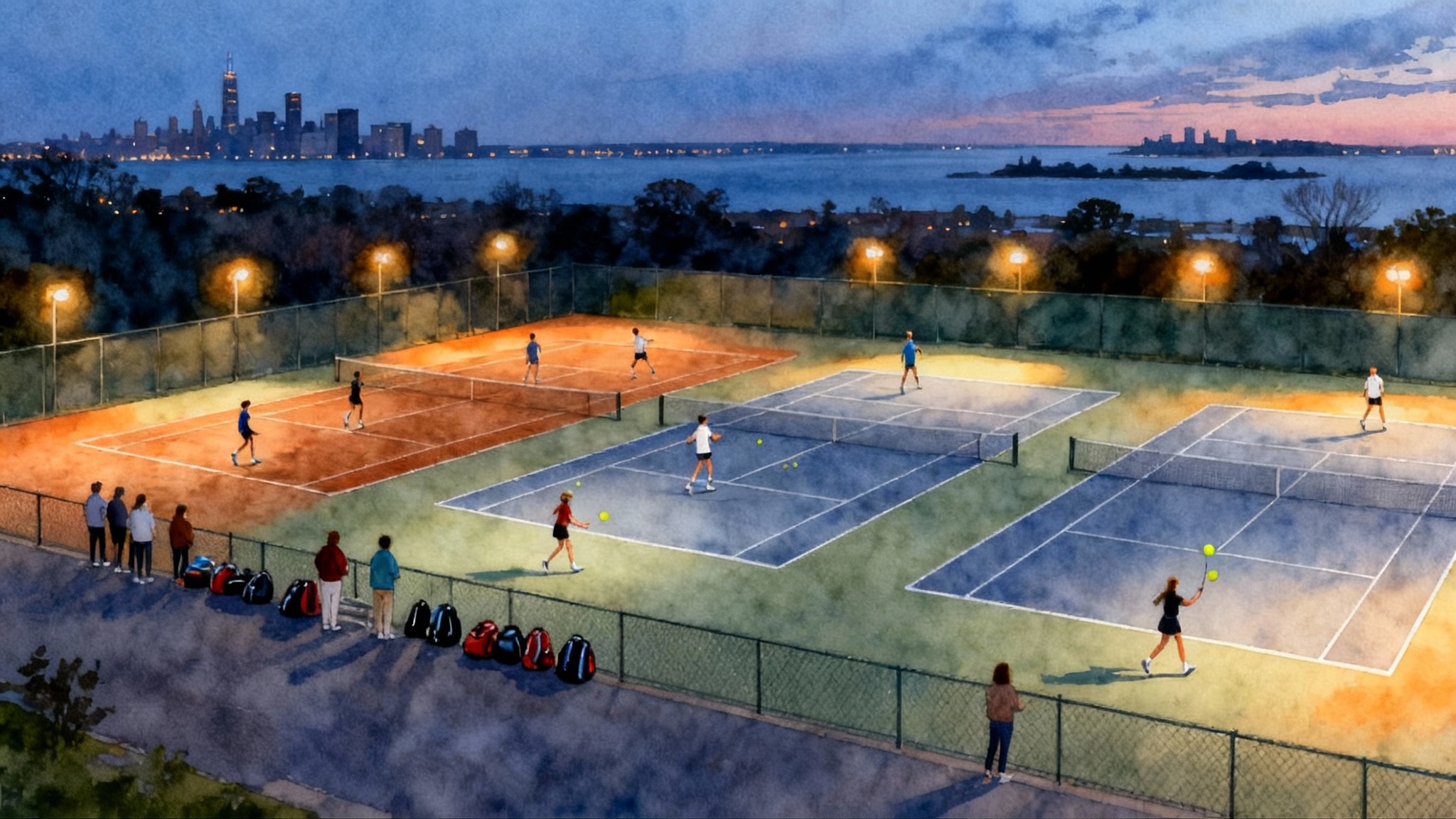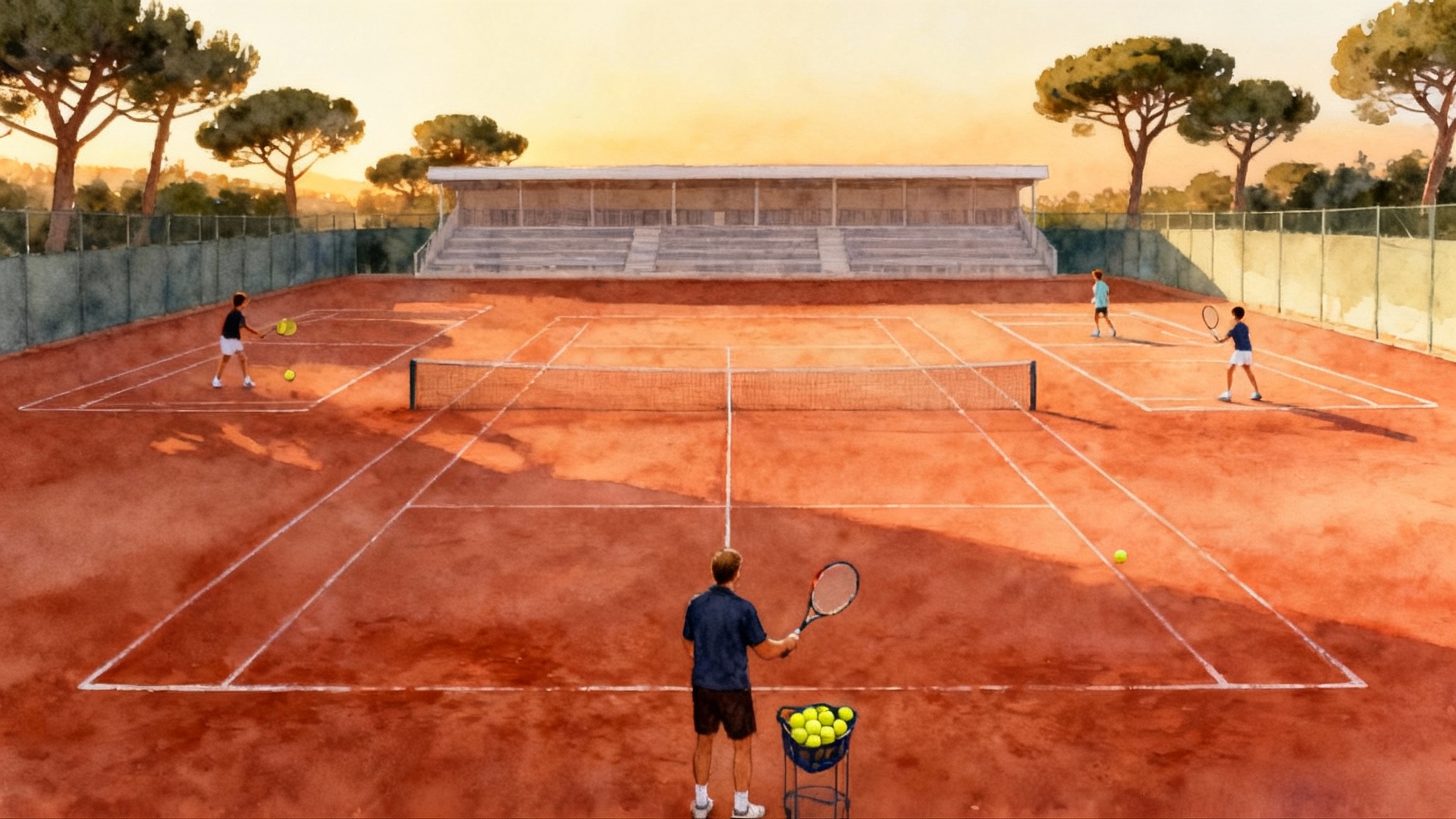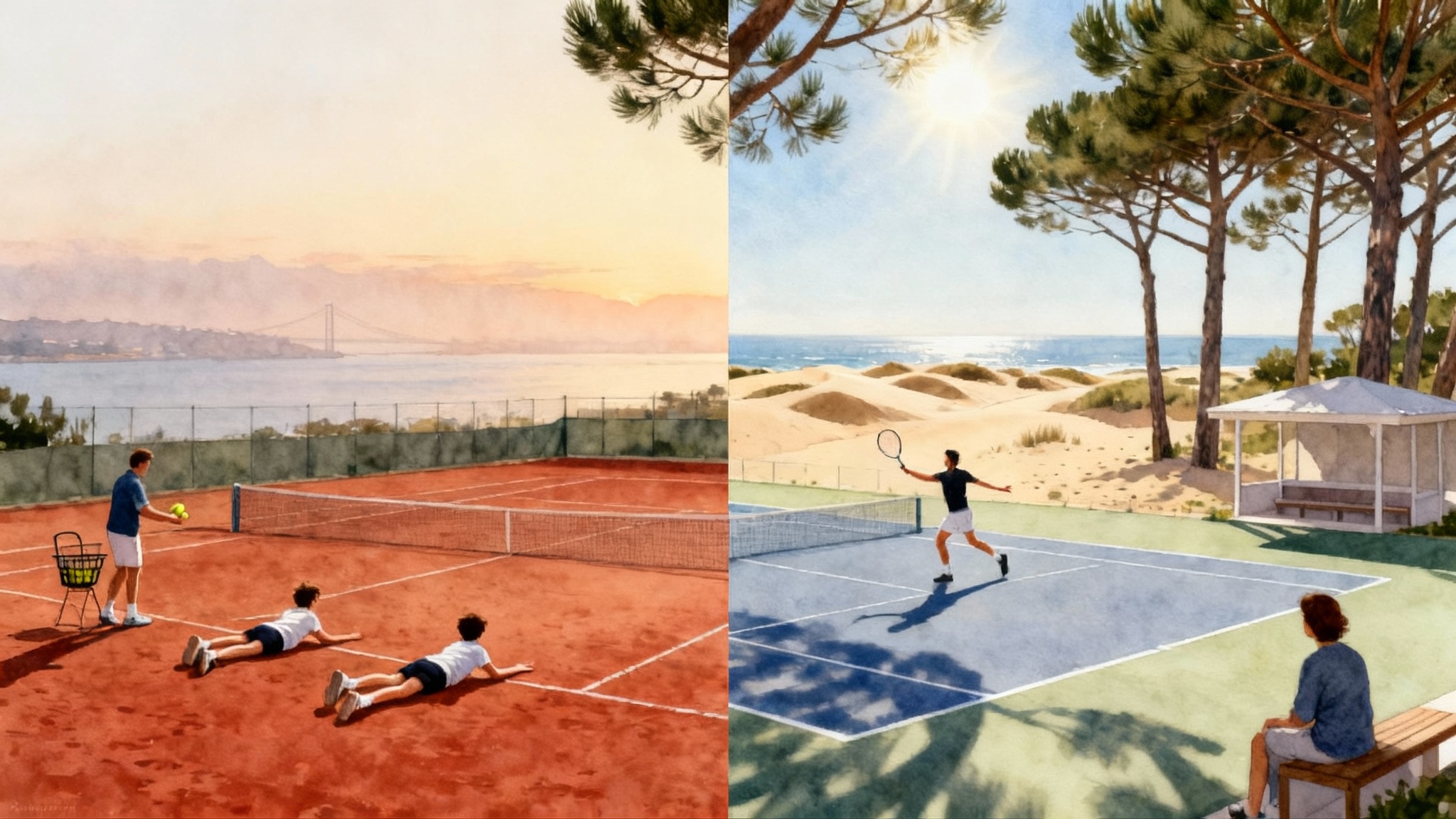Best Southern California Tennis Academies 2025–2026
A practical buyer’s guide for Southern California tennis families and adults. Compare programs on training models, ratios, surfaces, boarding, pricing, and college support. Includes commute tips, tournament access, and sample weekly schedules.

How to use this guide
Choosing a tennis academy in Southern California is not only about the name on the gate. It is about the training model, the daily ratio on court, how often your player sees live ball under pressure, whether there is any real access to clay, and how a program helps with college placement. Add real life constraints like traffic, tournament radius, seasonal weather, and your budget, and the choice becomes a puzzle you can solve with a clear plan.
This buyer’s guide distills that plan for the 2025 to 2026 season across Los Angeles, Orange County, and San Diego. You will find a side by side way to compare high performance and development tracks, typical coach to player ratios, which places are day only and which offer boarding or host family options, what transparent pricing usually looks like, and the kind of college support that actually moves the needle. We include commute and boarding planning, access to UTR and United States Tennis Association events within 60 to 120 minutes, seasonal weather notes, and sample weekly schedules for both juniors and adults. For cross region comparisons, see our guides to the Best Florida Tennis Academies 2025–2026 and the Best Texas Tennis Academies 2025–2026.
The two training models you must understand
Every legitimate program clusters into one of two models. Some academies host both models on different courts or at different times, but you still need to know which track you are buying on any given day.
- High performance: Built around tournament players who already compete year round. Expect heavy live ball, pattern training, pressure drills, tracked sets, and fitness that looks like prehab and speed work rather than a general workout. Goal metrics include match wins, rating bumps, and standards such as holding serve above 65 percent in match play or converting 50 percent of break points.
- Development: The pathway for beginners to early competitors, often younger or older returners. Expect more technical progressions, basket work, themed point games, and broader athletic development. Goal metrics include reliable contact, 10 ball rally consistency, serve form that holds up to light pressure, and a first UTR or United States Tennis Association match.
The right choice depends on current match volume and tolerance for intensity. A player logging three to four verified matches per month belongs in a high performance block, even if technique is still evolving. A player competing less often will usually progress faster on a development schedule that adds targeted match play.
Ratios, surfaces, and daily design
The best programs talk about training design the way a good classroom teacher talks about lesson plans. Here is what to look for and why it matters.
- Coach to player ratios: For high performance, 1 coach for 4 to 6 players is a healthy range during live ball and sets. Development blocks can stretch to 1 to 6 or 1 to 8 during ball feeding or fundamental drills. Footwork and conditioning can be larger, 1 to 10 to 12, as long as form is actively corrected.
- Surfaces: Southern California is hard court dominant. If clay access matters to you, confirm in writing how many clay sessions you will get each month and where they happen. Expect that clay requires a facility partner or a short drive and often a guest fee.
- Video and data: Ask whether there is match video review each week, and what is measured. Simple but powerful data include first serve percentage, return contact height, plus minus on short ball approaches, and rally length on errors. Ten minutes of honest review after a set often does more than thirty minutes of new drills.
- Fitness and prehab: Look for shoulder care, hip mobility, landing mechanics, and footwork patterns specific to serve and first step. Generic workouts are fine for general health, but specificity reduces injury and stabilizes performance.
Boarding versus day in Southern California
Most Los Angeles and San Diego programs are day only. Orange County includes both day and a few established boarding or host family options. Boarding can make sense for international students or players whose commute would reduce training quality. If you consider boarding, insist on clarity around the following items.
- Housing type and adult supervision hours
- School coordination and quiet study blocks
- Weekend tournament transport, fees, and chaperone policies
- Meal plans and hydration support
- Medical care and emergency procedures
Day families can capture much of the boarding advantage with a tight commute plan, smart practice windows, and carpooling. See the commute section below for precise time blocks that work in Southern California traffic.
Transparent pricing and what it should include
Pricing varies, but there are clear bands you can use to budget and to spot quotes that leave out essentials. Use these 2025 to 2026 ranges as a reality check.
- Development day programs, 3 to 5 afternoons per week: roughly 900 to 2,000 dollars per month
- High performance day programs, 4 to 6 days per week with fitness: roughly 1,500 to 3,500 dollars per month
- Boarding packages that include training, housing, meals, study hall, and tournament transport: roughly 4,000 to 7,500 dollars per month
- Private lessons: roughly 90 to 200 dollars per hour depending on coach profile and facility
- Hitting partners: roughly 40 to 90 dollars per hour
- Stringing and materials: roughly 25 to 40 dollars per job, more for natural gut
- Tournament entries and travel: United States Tennis Association singles draws often 70 to 150 dollars per event, Universal Tennis events often 45 to 80 dollars per event, plus gas, parking, and sometimes hotel
A transparent quote should itemize court time, fitness, video, tournament coaching, and any add ons. If tournament coaching is billed per day, ask for a written day rate and what it covers, including warm up, between match check ins, and post match notes.
The regional landscape at a glance
Southern California is not one market. Each region has different facility density, commute patterns, and tournament pockets.
Los Angeles
- Density: Many neighborhood hubs with distinct cultures. The west side leans club based with large junior programs, the valley and northeast have more public center high performance pods, and the south bay has reliable match play communities.
- Boarding: Mostly day only. Host family arrangements exist on a case by case basis.
- Surfaces: Hard courts dominate, clay is rare and usually limited to a few Har Tru courts at private clubs or specialized facilities. Expect to travel for consistent clay reps.
- Commute tip: If your player can train before school, a 6:30 to 8:30 a.m. slot can beat traffic. Afternoon windows are more reliable after 6:30 p.m. during weekdays.
Orange County
- Density: A compact web of high activity clubs and public centers. Orange County families often enjoy shorter tournament drives in all directions.
- Boarding: This is the county where boarding or formal residential programs are most available. Day families can still find balanced schedules without long drives.
- Surfaces: Almost entirely hard, with occasional clay access at specific clubs by arrangement.
- Commute tip: The 2:30 to 3:15 p.m. window is usually open for local school dismissals, but freeway speeds fall quickly. Plan 20 percent buffer time for weekday tournament check in.
San Diego
- Density: Two major city hubs plus strong North County pockets. Match play is easy to find most weekends.
- Boarding: Primarily day based. Host family options exist in some programs, confirm oversight and school support.
- Surfaces: Hard courts almost everywhere, clay rotations are limited and scheduled.
- Commute tip: Coastal routes can be faster outside peak hours. Inland to coastal can double during evening traffic, so favor morning travel for weekend events.
For a living list of regional programs you can sort by training model and location, use your academy tours and calls to build a short list, then apply the checklist below.
Case study checklist: Steve Adamson Tennis Academy, San Diego
Use this as a practical template whether you are touring Steve Adamson Tennis Academy or any San Diego program. Read the Steve Adamson Tennis Academy profile for background before your visit.
Profile: A 15 year old sophomore sits at a 5 to 7 Universal Tennis Rating band and plays one to two tournaments per month. Goal is to reach consistent varsity number one and start a realistic Division III or mid major Division I college conversation by spring of junior year.
Questions to bring and why they matter:
- Training model by day: Which blocks are high performance and which are development. Avoid blended groups if match goals are aggressive.
- Daily ratio promises: Ask for typical and maximum counts for live ball, for sets, and for basket or technique time.
- Match video plan: Confirm weekly review minutes and who runs the session. Ask for two sample breakdowns.
- Surfaces and patterns: How often are there clay sessions, how are sliding and defense coached, and how do those adjustments carry back to hard courts.
- Tournament coaching: Day rate, number of players per coach on tournament days, warm up length, and between match analysis.
- Fitness: Who writes the plan, how shoulder care and landing mechanics are taught, and how progress is tracked.
- College support: Timeline, outreach plan, video portfolio production, coach call preparation, and verification of placements in the past three cycles.
- Commute and class fit: Map a normal school day and see a full week on a calendar. If it does not fit on paper, it will not fit in real life.
A sample week for this player in San Diego could look like the high performance plan listed below, anchored by two weekday set days and one weekend event within 60 to 120 minutes. If the academy offers morning sets, shift one set day before school and one after school to reduce fatigue.
Tournament access within 60 to 120 minutes
Your event map sets the training rhythm. In Southern California, a 60 to 120 minute circle from Los Angeles, Orange County, or San Diego touches dozens of draws most weekends across Universal Tennis and United States Tennis Association pathways.
- Typical 60 minute radius from central Orange County reaches north San Diego County, Long Beach and Lakewood, Inland Orange County, and parts of the San Gabriel Valley.
- Typical 90 minute radius from west Los Angeles reaches the Conejo Valley, Calabasas, parts of Ventura County, and north Orange County.
- Typical 120 minute radius from San Diego reaches Orange County, Temecula and the Inland Empire, and southern Riverside County. Families sometimes stretch farther for special events.
Plan your calendar in four to six week blocks. Schedule two event weekends, one heavy set weekend, and one recovery or practice tournament weekend. If your player is new, add starter events that guarantee more matches, often round robins or two match formats. The goal is a steady drumbeat of competitive reps, not one big weekend and a month off.
Seasonal weather and how to adapt
- Winter, December to March: The rainy season brings intermittent shutdowns. Have a nearby covered fitness option and a ball striking wall earmarked for rainy days. Humidity rises after rain, which can slow courts and favor heavier spin.
- Spring, April to June: Cooler mornings with marine layer along the coast. Balls stay lower, and longer warm ups help prevent pulls.
- Summer, July to September: Heat spikes inland and occasional coastal heat waves. Hydration and electrolyte plans are mandatory. Consider earlier start times, white or light gear, and extra grips.
- Fall, October to November: Dry air and Santa Ana wind periods. Windy training is a skill, so keep two or three windy day patterns ready such as higher margin heavy crosscourt and shorter slice into the open court.
Sample weekly schedules
Use these as templates. Replace blocks with your academy’s actual names and times.
Junior high performance, school in session
- Monday: 4:00 to 6:00 p.m. live ball and patterns, 6:00 to 6:30 p.m. mobility and shoulder care
- Tuesday: 6:30 to 7:45 a.m. sets or serve plus one patterns, school, light 30 minute recovery in evening
- Wednesday: 4:00 to 5:00 p.m. technique on serve and return, 5:00 to 6:30 p.m. tracked sets with changeover goals, 6:30 to 7:00 p.m. video notes
- Thursday: 4:00 to 5:30 p.m. footwork and speed, 5:30 to 6:30 p.m. transition patterns and volley finishing
- Friday: 4:00 to 6:00 p.m. live ball and pressure games, 6:00 to 6:20 p.m. pre tournament warm up habits
- Saturday or Sunday: Tournament within 60 to 120 minutes, or practice match block of two full sets with a super tiebreak. Write a short debrief with two wins and one work on item.
Junior development, school in session
- Monday: 4:00 to 5:15 p.m. stroke fundamentals with ball machine work, 5:15 to 5:45 p.m. fun point games
- Tuesday: 4:30 to 5:15 p.m. athletic movement and balance, 5:15 to 6:00 p.m. serves with targets
- Wednesday: Rest or 30 minute wall session, add overhand throws and shadow swings
- Thursday: 4:00 to 5:30 p.m. live ball to 10 ball rally goals, 5:30 to 6:00 p.m. simple match play scoring
- Friday: 4:00 to 5:30 p.m. technique touch ups, 5:30 to 5:45 p.m. journal one cue for each stroke
- Weekend: Entry level event or two set practice match, goal is learning scoring and routines
Adult performance, mornings preferred
- Monday: 6:30 to 7:45 a.m. live ball, 10 ball point starts
- Wednesday: 6:30 to 7:30 a.m. serve plus one patterns, 15 minutes of toss and rhythm drills
- Friday: 6:30 to 7:45 a.m. tracked sets, switch sides every four games
- Weekend: League match or doubles practice, 20 minute recovery walk afterward
Adult development, evenings
- Tuesday: 7:00 to 8:00 p.m. forehand and backhand fundamentals, 8:00 to 8:15 p.m. mini sets to seven points
- Thursday: 7:00 to 8:15 p.m. serve basics and returns, 8:15 to 8:30 p.m. doubles positioning walk through
- Weekend: 60 minute social play or ball machine with targets
Commute and boarding planning that actually works
Time is the hidden cost. Map the day you will live, not the day you wish you had.
- Pick a primary training window that fits your life. Before school works best for players within 15 to 25 minutes of the facility. After school works if homework is chunked and bedtime is protected.
- Build a two carpool list. Families in the same school district can share two days each, which turns a heavy week into a manageable week.
- If you live 45 to 60 minutes from your top choice, consider one early morning block plus two afternoon blocks to avoid three heavy drives. If you still face four or more long drives per week, revisit a boarding or host family option for one semester.
- For weekend events, leave the house 30 minutes earlier than your map estimate. Parking, bathroom lines, and warm up find that half hour quickly.
College placement support that matters
Good college guidance is a process, not a pamphlet. Ask for these deliverables and timelines.
- A target school list built from your player’s style, academic interests, video, and verified results
- A calendar with key dates from sophomore spring through senior fall, including video production windows and communication landmarks
- A video portfolio with match highlights and a three to five minute practice film that shows footwork, serve, return, and transition patterns
- Email and call preparation, including three practice calls with coach feedback
- A documented track record of placements over the last three graduating classes, with contactable parent references
If you do not see these pieces in writing, you are buying hope rather than a plan.
A short list of hubs to visit
These are not the only strong programs in Southern California, but they are reliable starting points for a tour and an apples to apples comparison using the checklist above.
- Los Angeles: Look for high performance pods at major public centers and established clubs with large junior match play groups. You want a place that can promise tracked sets and a clear pathway for competitive progression.
- Orange County: Advantage Tennis Academy in Irvine is a well known example of a program that serves both development and high performance families and is one of the county’s clearer options for residential training. Compare any program’s boarding promises against your day family commute plan and budget.
- San Diego: Use Steve Adamson Tennis Academy as your case study tour, then compare what you hear to other city hubs that offer regular match play and tournament coaching. If one program can articulate daily design, ratios, video, college support, and a tournament plan, that is usually the right place to start.
Final takeaways
- Pick the model first, high performance or development, then pick the academy.
- Demand clarity on ratios, surfaces, video, and fitness. If it is not on paper, it is not real.
- Budget with all fees in view, including tournament coaching and travel.
- Plan your commute with the same attention you give to your forehand.
- Build your calendar around a steady rhythm of matches. That rhythm will drive the training plan, not the other way around.
Southern California offers year round tennis, deep tournament calendars, and a spectrum of training cultures. The best fit is the program that can show you how every practice connects to the next match, and how the next match connects to your player’s long term goal. Bring this checklist to each tour, ask concrete questions, and you will make a decision you feel good about when the lights turn on and the first ball is in the air.
